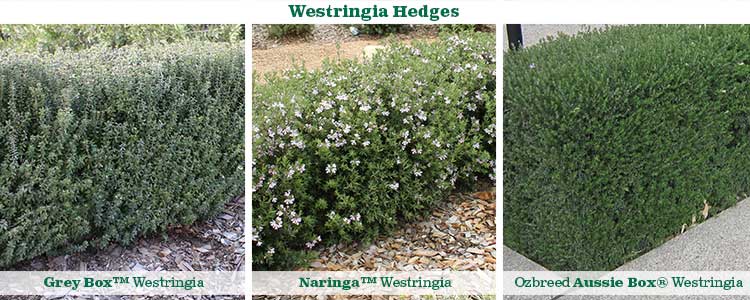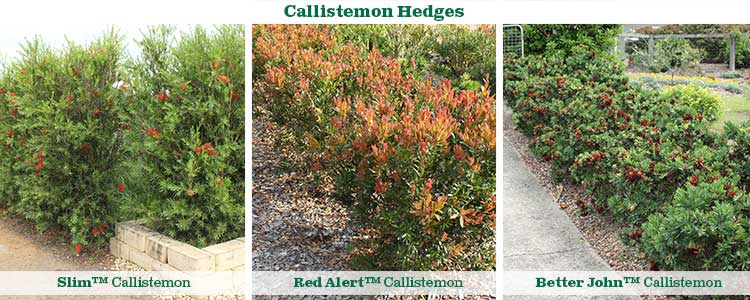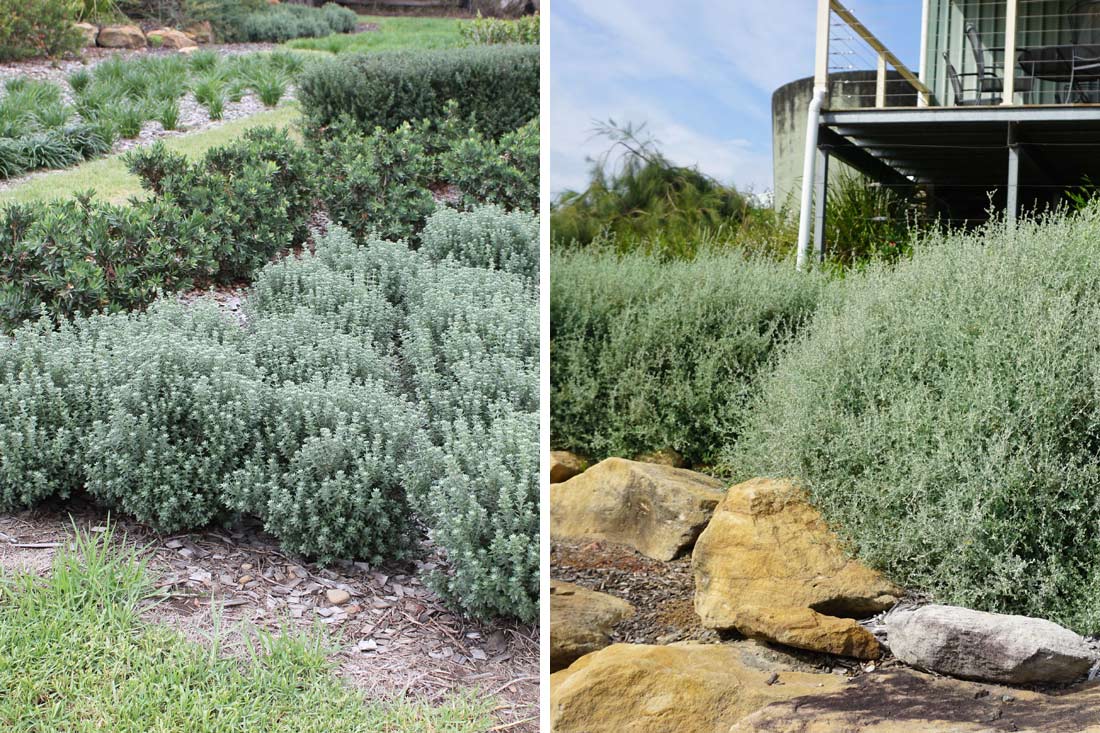We may not automatically think of Australian native plants for hedge options, but we should. The advantage of using natives is undoubtedly climate suitability. Australian gardens in general face fairly harsh soil and climate conditions, which can be tough on many exotic plants. Native plants have the advantage of having already adapted to these conditions so are far more likely to thrive here. This may mean tough grey leaved plants which look very Australian, or it could mean deep lush green. Far more native plants are suitable for hedges than we may think, and most of them outperform exotic plants in that they will thrive on less maintenance, less water and across a far greater climate range.
Lily pillies spring to mind immediately. Various Acmena and Syzigium species have been so successful as hedges that we tend to forget that they are native plants. Lily pillies make ideal hedges because they generally have smallish leaves, have a naturally dense growth habit and respond well to pruning. They make the perfect alternative to privet or even box hedges, producing the classic dense green hedge with a native plant. Plant breeding has developed a huge array of cultivars catering to almost any style of hedge. Hobbit™ Syzygium francisii ‘DBK01’ PBR is ideal for low formal hedges, Sublime™ Acmena smithii ‘DOW30’ PBR is perfect for dense privacy hedges, and Red Head™ Acmena smithii ‘BWNRED’PBR is perfect for added interest with brightly coloured new growth. There is even a lily pilly which has been bred to be very slender and is perfect for hedges in narrow spaces – Pinnacle™ Syzygium australe ‘AATS’ PBR.
Native hedge options extend a long way past lily pillies however. Callistemons and Westringias have also been extensively bred to give a wide variety of forms and colours which give many hedging choices.
Westringias are ideal for hedges due to their naturally dense growth habit and they respond well to pruning. They are exceptionally hardy natives which tolerate a wide range of soil types and climate conditions, including coastal and arid areas. Their small leaves allow them to be clipped into very tight shapes, making them ideal not just for hedges but also for topiary and tight round balls. Typically they have a grey hue to the leaves which has been accentuated in the beautiful Grey Box™ Westringia fruticosa ‘WES04’ PBR. This compact plant has a natural ball shape to approximately 45cm, making it an ideal choice to create formal features without excessive trimming. It is highly drought and frost tolerant and suits most soil types. Another unique feature of the Grey Box™ plant is that it is tolerant of periodic wet feet.
For a taller Westringia hedge, Naringa™ Westringia ‘WES01’ PBR is ideal. It will grow to 1-2m and is naturally dense and compact. Ozbreed Aussie Box® Westringia ‘WES02’ PBR is a medium sized dense hedge and a perfect native alternative to the English box. Both Naringa™ and Ozbreed Aussie Box® feature dark green leaves with a slight grey hue and will produce masses of mauve flowers. They are exceptionally hardy plants which will thrive in a much wider climate range then English box, while requiring much less water.

Callistemons also have lent themselves perfectly to breeding for dense hedge plants. They respond very well to pruning to form dense green hedges and are extremely drought tolerant plants. Better John™ Callistemon viminalis ‘LJ1’ PBR is ideal for a small to medium hedge which will need minimal care in order to maintain a neat and dense hedge. It has dark blue-green foliage with new growth featuring a silver hue, and masses of red flowers in spring. As with all of the Callistemons, the flowers are wonderfully eye-catching, and highly attractive to native birds and bees. This is particularly so with Flora Burst™ Callistemon viminalis ‘CC06’ PBR, bred for spectacular flowering in addition to the dense compact nature which responds extremely well to pruning.
Another exceptional Callistemon is Red Alert™ Callistemon viminalis ‘KPS38’ PBR which features vivid red new growth through spring and autumn, and lighter red new growth at other times. It is the perfect native alternative to Photinia and yet outperforms Photinia in that is suitable over a much greater area of Australia, requires significantly less maintenance and features coloured foliage for a much longer period.
Also noteworthy amongst the Callistemon hedges is Slim™ Callistemon viminalis ‘CV01’ PBR which is a dense but narrow shrub, perfect for hedges in tight spaces.

Whilst other natives may not have been bred as extensively as the ones mentioned above, there are still a huge range of natives which are highly suitable for pruning into tight hedges. Acacia fimbriata has become popular recently and proved to be very successful as a tight hedge, albeit a short lived one as it has a life span of 10- 15 years.
Coastal Pink™ Correa alba ‘COR10’ PBR is ideal for coastal situations but highly adaptable to other areas as well and is an attractive plant with bird attracting flowers.
Melaleuca thymifolia and some of the other small melaleucas have a number of highly garden-worthy cultivars which can be pruned into low – medium hedges with the benefit of long flowering times. The popular “Claret Tops” cultivar of melaleuca is grown for its red new foliage rather than flowers but also makes a very hardy and low maintenance short hedge.
Leptospermums have been developed for the home garden with a range of long flowering cultivars in different shades of pinks and white which make wonderful informal hedges or can be pruned for a denser hedge.
For a completely different look, the red cottonwood hibiscus is a native hibiscus with large round reddish leaves contrasting with the pale yellow flowers and makes a wonderful hedge.
While native plants may not immediately spring to mind as hedge plants, they are well worth considering and giving a go, as more often than not, they are providing greater interest with less care and water than exotic hedges. This not only makes for a more interesting and more resilient garden, it is wonderful for the local wildlife as well.
*Article published by Kate Wall





